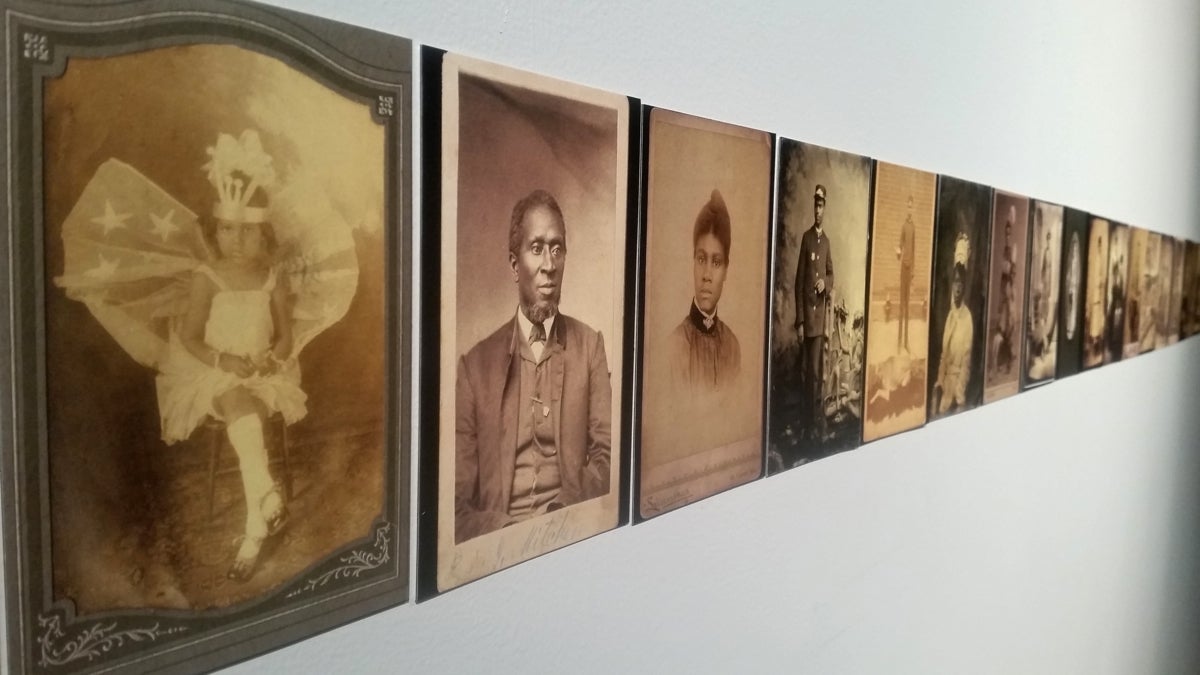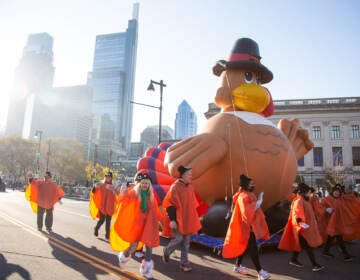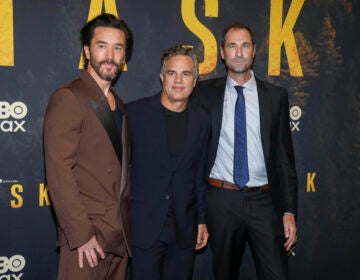‘Great Migration’ films highlight transformative power of African-American communities
Listen
'Ancestral Correspondence
This weekend, an African-American film festival in Philadelphia will debut four short films about the Great Migration, a period in the early 20th century when African-Americans moved in great numbers from the South to the North.
The films are the tip of an iceberg. They launch a year-long project about the transformation of Philadelphia.
In 1916 — 100 years ago — the Pennsylvania Railroad offered free passage to anyone who agreed to come to Pennsylvania to work the railroad. It marks the start of the first wave of the Great Migration, when 1.6 million people — mostly black — moved from the agrarian South to the industrial North.
The church, the foundation
Churches played a big part in that movement. One of the biggest churches in the nation at the time was the Tindley Temple, a United Methodist church in what is now the Graduate Hospital neighborhood of Philadelphia. At one point it boasted over 12,000 congregants, in large part because of the Reverend Charles Tindley, the charismatic pastor and songwriter who wrote scores of gospel hymns.
Many of his songs have become staples of gospel and bluegrass, such as “We’ll Understand It By and By,” “Find a Better Home,” and “I’ll Overcome Someday,” which decades later became the Civil Rights Movement anthem, “We Shall Overcome.”
The artist couple Menti and Keith Obadike created a sound installation by mixing excerpts of Tindley’s “Find a Better Home” with recordings they made of the temple, itself. They fixed vibration sensors on the building’s wooden rafters to record the vibration of the architecture.
“We recorded the structure of the church,” said Keith Obadike. “We made audio recordings and filmed the architecture. So when you see the video, the focus is very much on the things that hold the building up.”
In a very real way, the temple’s structure was supported by its congregants. Hundreds of people — many of the migrants from the South — took out mortgages on their personal homes so that Tindley Temple could be built.
The congregation takes great pride in the building — now a registered historic landmark — and the fact that they paid for it and its massive, 6,000-pipe organ.
“There’s controversy about them being charged with not paying for the organ. But they kept the receipt. And they still have the receipt,” said Mendi Obadike. “All these stories about the building, and proving they paid for it — all that went into our thinking about what it means to have this building, and to listen to it.”
Later this fall, the Obadikes will put another sound installation on-site the Tindley Temple. An audio loop of a phrase from one of Tindley’s songs will play for 15 minutes each day, triggered by the rising of the sun.
Stories of community
The story of huge numbers of people transforming the city is the point of “The Great Migration: a city transformed,” a multi-part project by Scribe Video Center in West Philadelphia. Founder Louis Messiah asked artists to focus on communites and institutions, not necessarily the leaders or heroes of those groups.
“Yes, individuals make up communities, and individuals may lead organizations, but it’s really rooted in communities,” said Massiah. “In some ways, institutions are official ways of recognizing communities.”
Massiah asked artist Lonnie Graham to interpret the Wissahickon Boys and Girls Club, in Germantown, founded shortly after the Civil War. It was the first organization to support African-American youth. Graham made the film “Ancestral Correspondence” in collaboration with current members of the Boys and Girls club.
Experimental filmmaker Keith Jerome Everson made an impressionistic and tragic film about James Walker Hood Eason, leader of the Philadelphia chapter of Marcus Garvey’s United Negro Improvement Association. After a bitter split from Garvey, Eason was assassinated in New Orleans.
Artist Tina Morton made a film out of articles and advertisements from the archives of the Philadelphia Tribune, a touchstone newspaper for many African-American migrants new to the North.
Finally, filmmaker Julie Dash — the first African-American woman to make a feature film for general theatrical release (“Daughters of the Dust,” 1991) — made a “tone poem” short about the space between the Mother Emmanuel A.M.E in Charleston, South Carolina, and the Mother Bethel A.M.E in Philadelphia. Using archival imagery, “Standing at the Scratch Line” follows a suitcase moving through the landscape.
All four films will screen at the Blackstar Film Festival this weekend, at the International House in West Philadelphia. Later, in the fall, those films will tour libraries and recreation centers throughout the city, culminating next spring in a major exhibition about the Great Migration at the African American Museum in Philadelphia.
The Great Migration: A City Transformed screens at the Blackstar Film FestivalSaturday, August 6, 5:30PMInternational House3701 Chestnut Street
WHYY is your source for fact-based, in-depth journalism and information. As a nonprofit organization, we rely on financial support from readers like you. Please give today.





